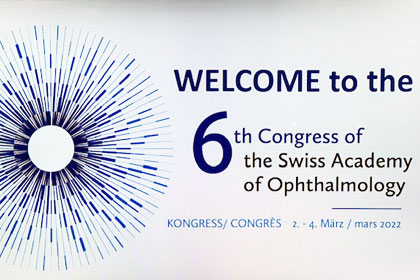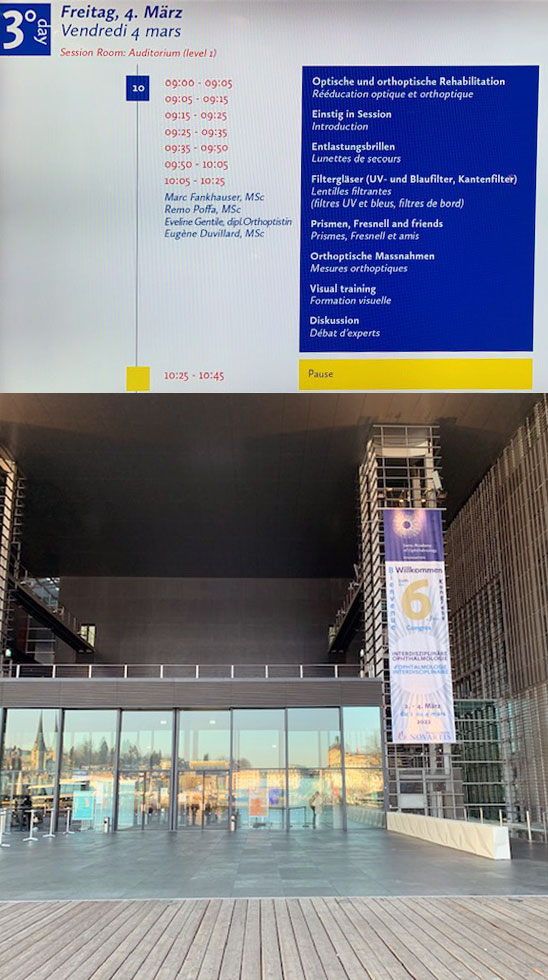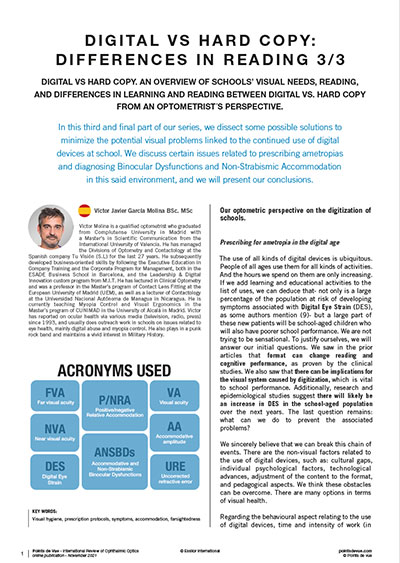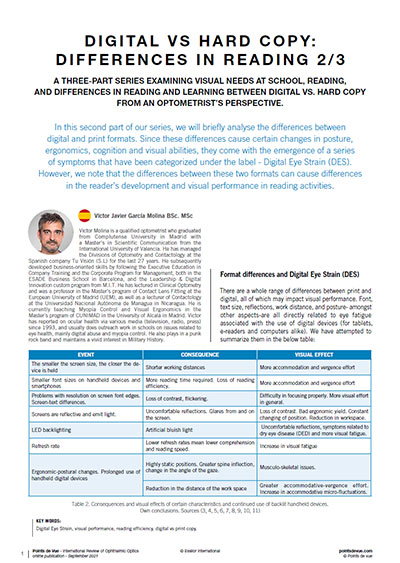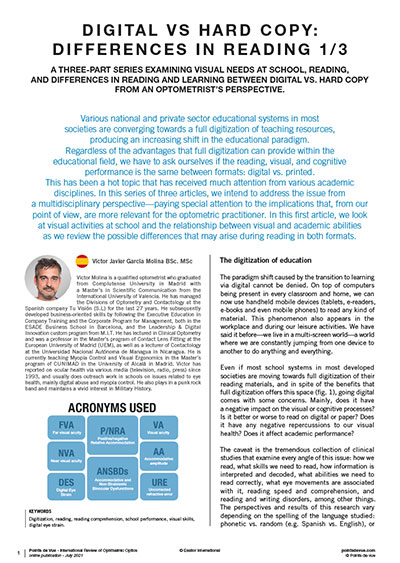
In this third and final part of our series, we dissect some possible solutions to minimize the potential visual problems linked to the continued use of digital
devices at school. We discuss certain issues related to prescribing ametropias and diagnosing Binocular Dysfunctions and Non-Strabismic Accommodation
in this said environment, and we will present our conclusions.

In this second part of our series, we will briefly analyse the differences between digital and print formats. Since these differences cause certain changes in posture, ergonomics, cognition and visual abilities, they come with the emergence of a series of symptoms that have been categorized under the label - Digital Eye Strain (DES).
However, we note that the differences between these two formats can cause differences in the reader’s development and visual performance in reading activities.

Various national and private sector educational systems in most societies are converging towards a full digitization of teaching resources, producing an increasing shift in the educational paradigm.
Regardless of the advantages that full digitization can provide within the educational field, we have to ask ourselves if the reading, visual, and cognitive
performance is the same between formats: digital vs. printed.
This has been a hot topic that has received much attention from various academic disciplines. In this series of three articles, we intend to address the issue from a multidisciplinary perspective—paying special attention to the implications that, from our point of view, are more relevant for the optometric practitioner. In this first article, we look at visual activities at school and the relationship between visual and academic abilities as we review the possible differences that may arise during reading in both formats.
